
计算机问题求解一论题2-03 ·算法的效率 2016年03月09日
计算机问题求解 – 论题2-03 - 算法的效率 2016年03月09日
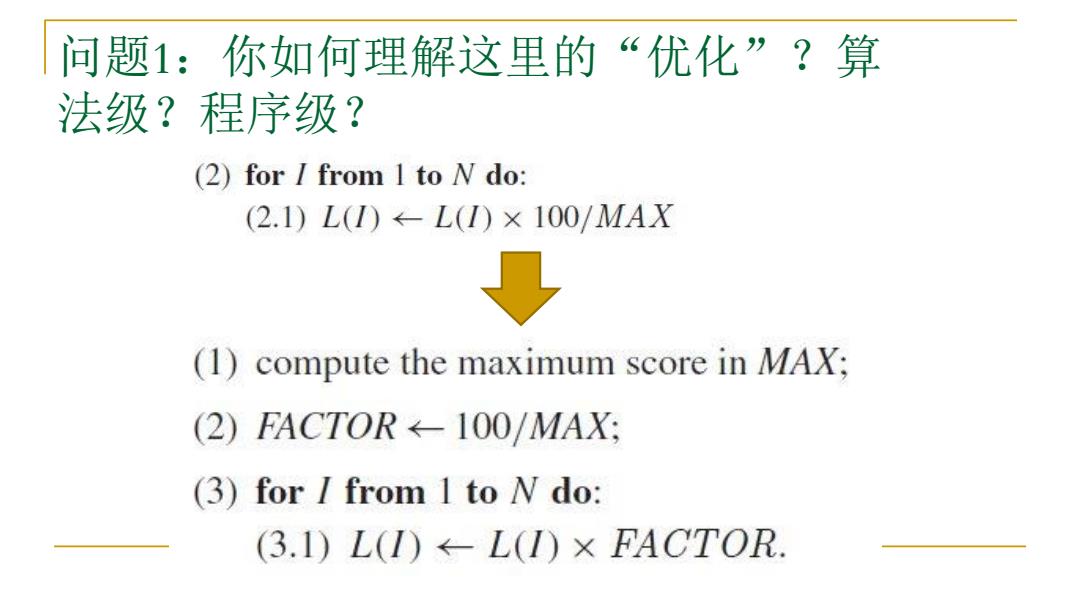
问题1:你如何理解这里的“优化”?算 法级?程序级? (2)for from I to N do: (2.1)L()←-L()×100/MAX (1)compute the maximum score in MAX; (2)FACTOR←-100/MAX: (3)for from 1 to N do: (3.1)L(I)←L(I)×FACTOR
问题1:你如何理解这里的“优化”?算 法级?程序级?
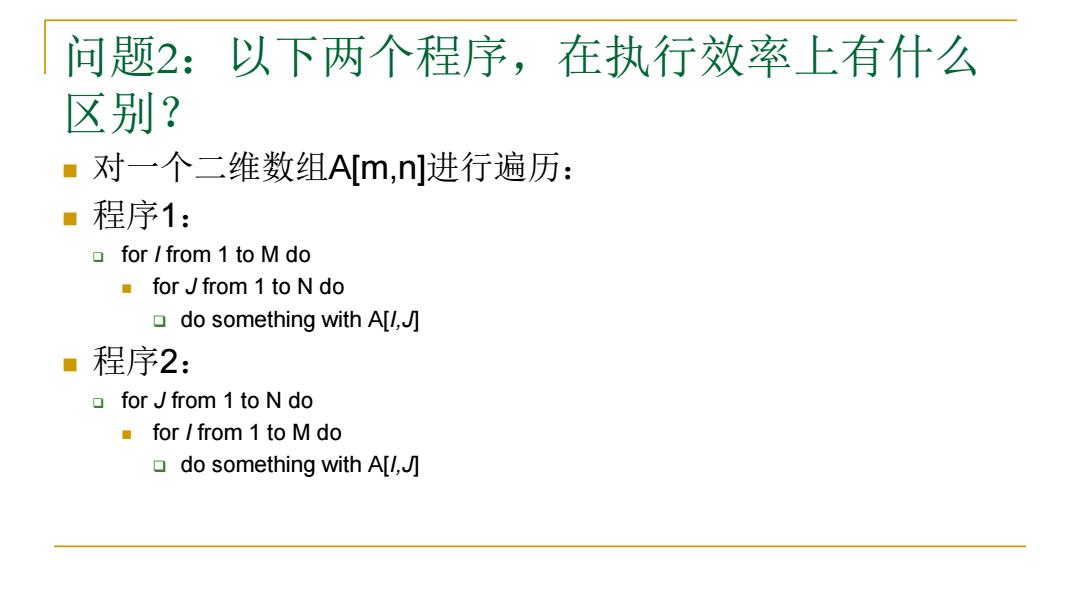
问题2:以下两个程序,在执行效率上有什么 区别? ·对一个二维数组A[m,n进行遍历: ■程序1: for /from 1 to M do for Jfrom 1 to N do do something with A[l,J] ·程序2: for Jfrom 1 to N do ■for from1 to M do do something with A[l,]
问题2:以下两个程序,在执行效率上有什么 区别? 对一个二维数组A[m,n]进行遍历: 程序1: for I from 1 to M do for J from 1 to N do do something with A[I,J] 程序2: for J from 1 to N do for I from 1 to M do do something with A[I,J]

间题3: 你能说出如何用Linear Search算法艘索一个未排序 的序列吗?书申给出的优化方法是什么?这种优化 是量上的优化还是质上的优化?? 给定一个算法,什么样的优 化算是质上的优化?
给定一个算法,什么样的优 化算是质上的优化?

问题3: “算法分析”主要是干什么?
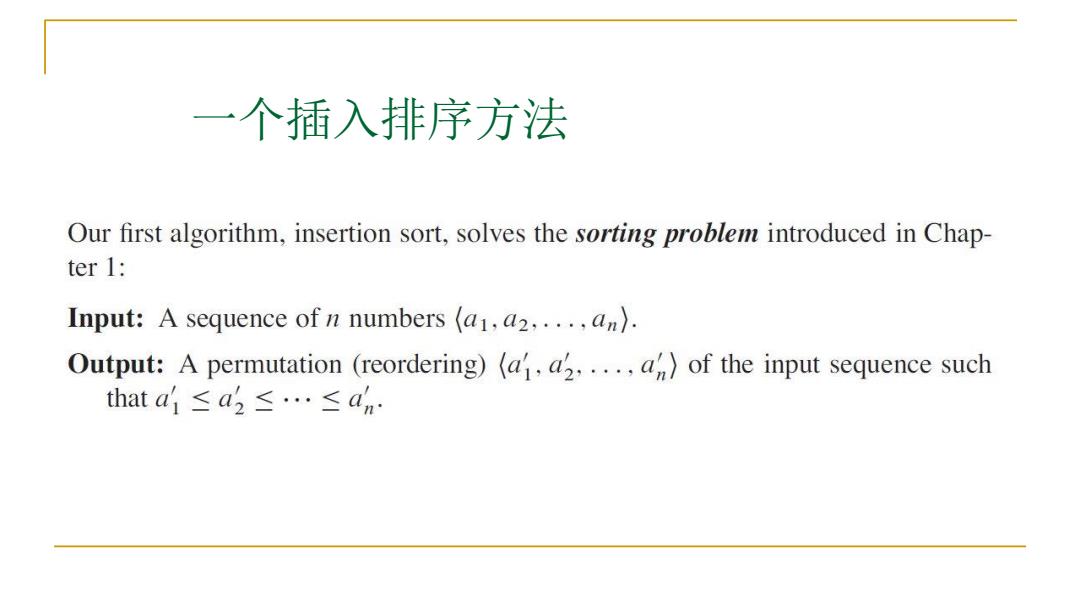
一个插入排序方法 Our first algorithm,insertion sort,solves the sorting problem introduced in Chap- ter 1: Input:A sequence of n numbers (a.a2.....an). Output:A permutation (reordering)(aa2.....a of the input sequence such that a≤a2≤…≤an
一个插入排序方法

插入法: 在“插入每张 牌前,手上的 % 牌都是已经排 4 10 品 好序的” 云 品 坐
插入法: 在“插入每张 牌前,手上的 牌都是已经排 好序的
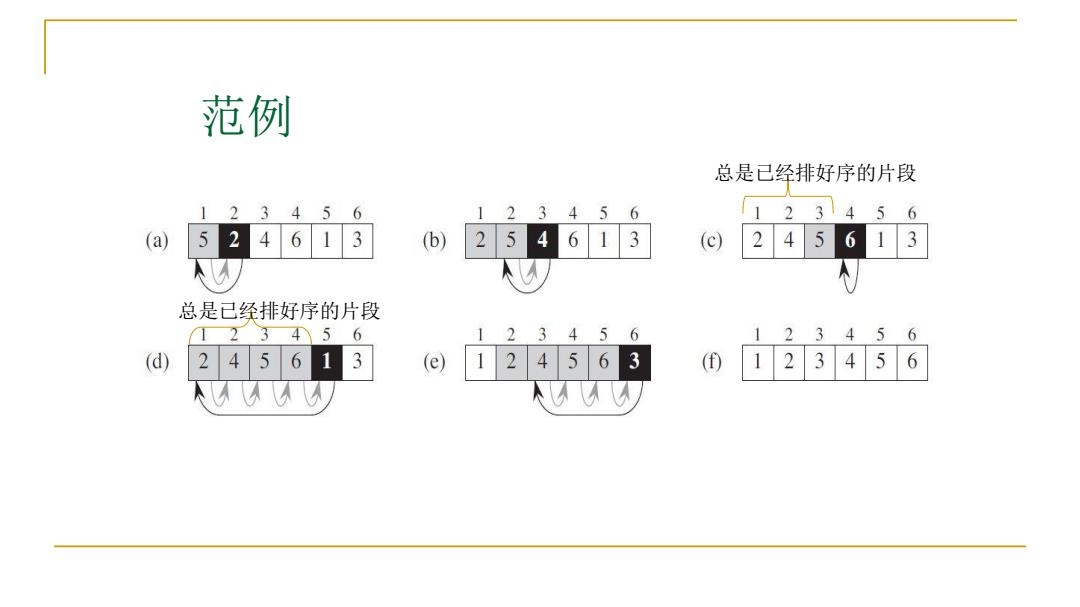
范例 总是已经排好序的片段 123 456 123456 1 23145 6 (a) 524613 (b) 254613 (c) 245613 总是已经排好序的片段 123456 123 456 12 3456 (d) 245 6 1 3 (e) 12 4 563 (f) 12 3456
范例 总是已经排好序的片段 总是已经排好序的片段
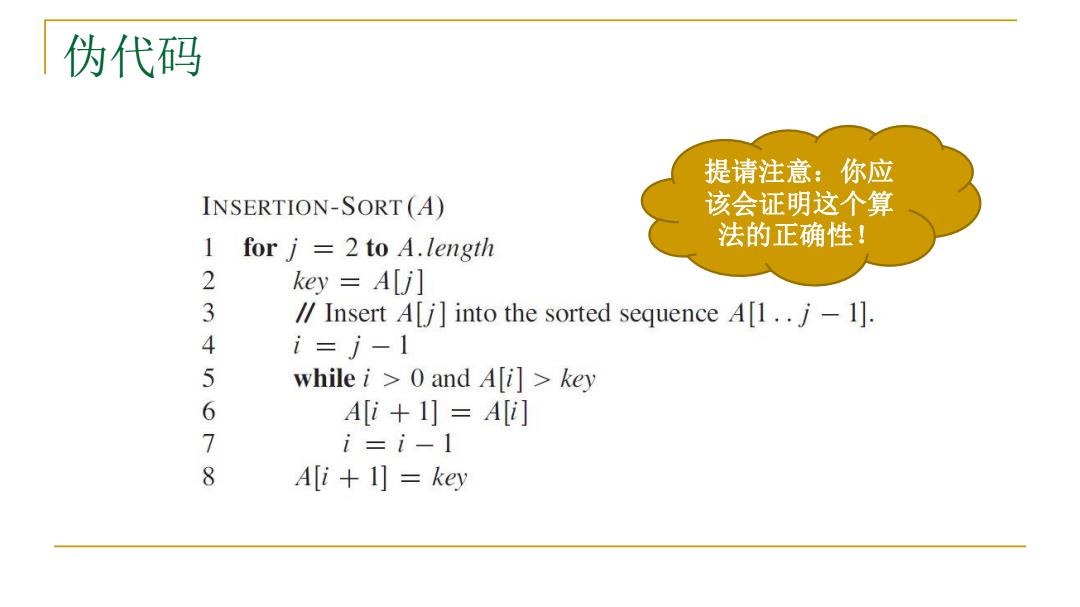
伪代码 提请注意:你应 INSERTION-SORT(A) 该会证明这个算 1 for j=2 to A.length 法的正确性! 2 key =Alj] 3 /Insert A[j]into the sorted sequence A[1..j-1]. 4 i=j-1 5 while i >0 and A[i]>key 6 A[i+1]=A[] 7 i=i-1 8 Ali 1]key
伪代码 提请注意:你应 该会证明这个算 法的正确性!
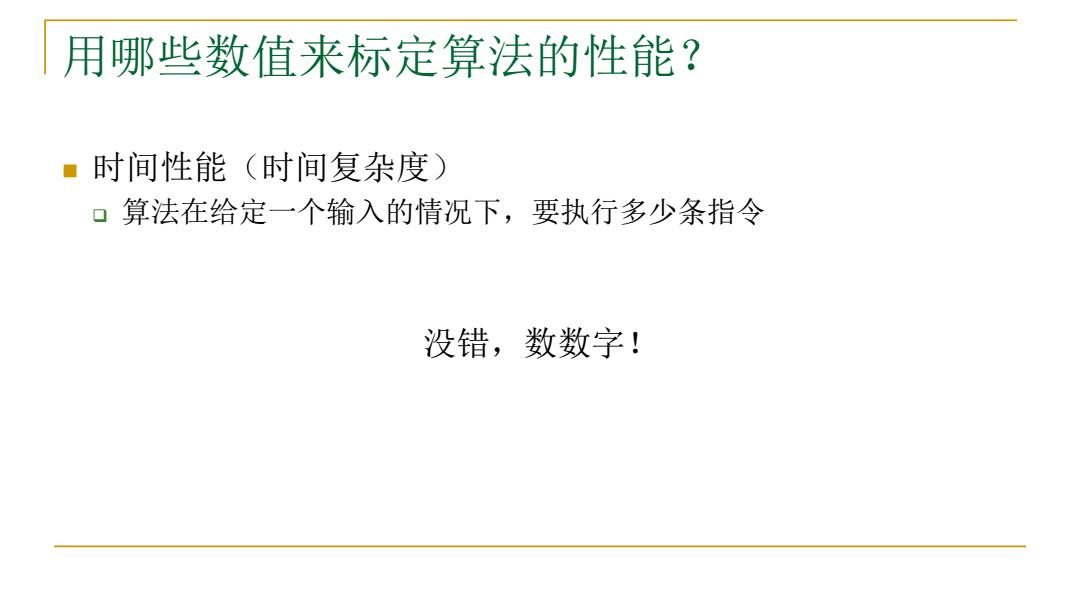
用哪些数值来标定算法的性能? ■时间性能(时间复杂度) 口算法在给定一个输入的情况下,要执行多少条指令 没错,数数字!
用哪些数值来标定算法的性能? 时间性能(时间复杂度) 算法在给定一个输入的情况下,要执行多少条指令 没错,数数字!